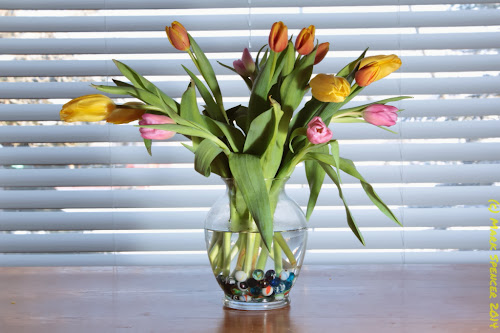The Setup
My trusty Canon 60D was mated with the general-purpose Canon 24-105mm f/4 L lens & mounted on the Manfrotto tripod. The flash was mounted with the Cactus v5 remote trigger, so that it could be mounted off-camera.
This nifty little DIY mod is called a "lightbulb". The idea is that the sour cream container acts as a diffuser, and the light is thrown in all directions. In practice, it works very well, and I will likely keep this little mod in my kit.
The Photos
Here is the basic setup: the "lightbulb" is placed inside the car between the front seats, and when triggered will light the car from inside. As you can see, I substituted Pat's car in the dark garage for the helicopter in the night sky.
This is a step towards the end product - you can see the desired effect. You can ALSO see the lightbulb peeking up above the dash !
I couldn't decide how to set up the shot with only one flash. So I also tried it in the back seat, to see how it looked. I don't like it as well, as the front seats are in deep shadow and you can't see anything but the silhouette of the fuzzy dice. In the perfect world, I'd like to shoot this with two flashes, one in the front, and one in the back.
Here is the final photograph, with the desired effect. Overall, I'm pleased with the effect, although one day I'll re-shoot it with a second flash.
Lessons Learned
Photography is really the craft of manipulating light. I thoroughly enjoyed this shoot, as it is an interesting & creative way to experiment with light. I might later try to reuse the technique, but with more light sources, and even models in the cabin.


















































